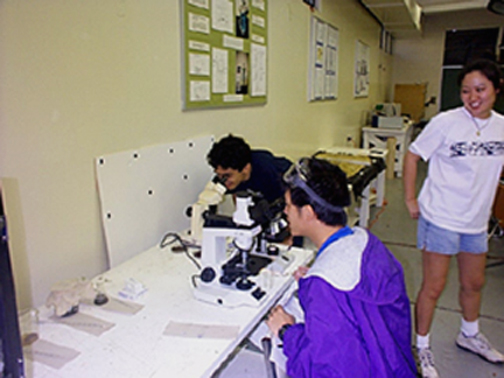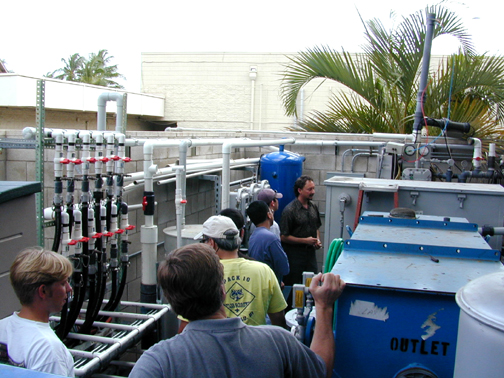BE 440-Bioremediation: Principles and Practices |
Class Description:
A new course, BE 440 was developed by the University of Hawai'i and offered in Spring 2000 semester through the Biosystems Engineering department in cooperation with faculty from the Departments of Microbiology, Agronomy and Soil Science, and Environmental Biochemistry.
Content of the course included:
-
The Soil Environment
-
Microbial Ecology
-
Metabolism and Biodegradation Reactions
-
Remediation Treatment Strategies
Text:
The text used for this class was Bioremediation Principles, by J. Eweis, S. Ergas, D. Chang, and E. Schroeder, WCB/McGraw-Hill, 1998.
BE 440 Preview
The course included several in-class laboratory exercises, designed to give students the practical experience based on the theory presented in the class. In the first lab, students measured soil parameters which affect the process of bioremediation, such as soil pH, moisture, organic matter and nutrient concentrations.
The next two labs allowed students to vary these parameters and determine their effect on the biodegradation of an herbicide and a aromatic hydrocarbon in soil. Students varied moisture levels, incubation temperatures, nutrient levels and soil type to determine what parameter was most critical for the biodegradation of a soil contaminant.
At the end of the course, students visited military and commercial sites where bioremediation is being used for treatment of a hazardous waste contamination. Students visited a site where a pesticide contaminated perched aquifer was being remediated using a combination of phytoremediation and bioremediation and a site where hydrocarbon contaminated aquifer was being remediated using the technique of "bioslurping".





